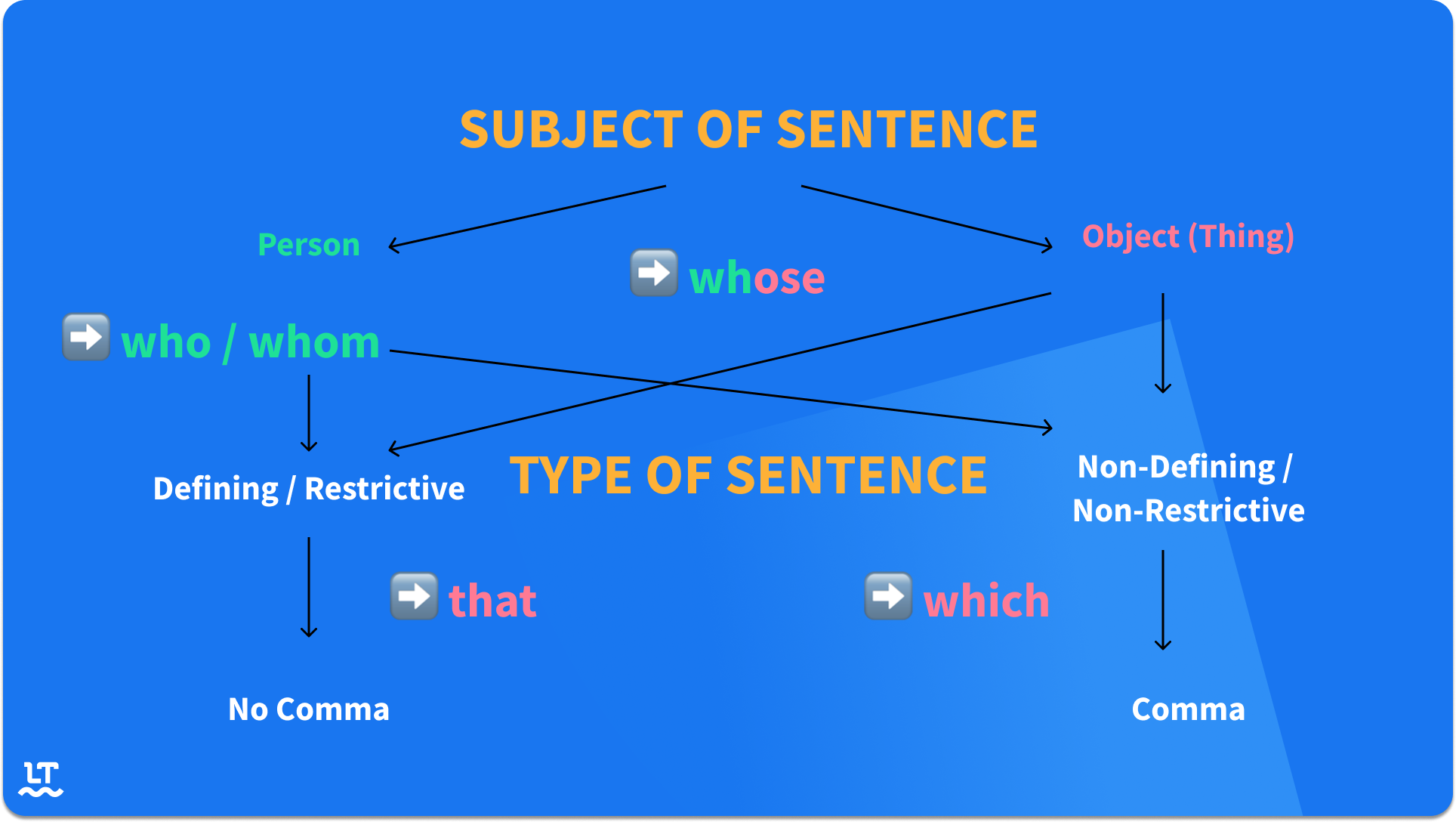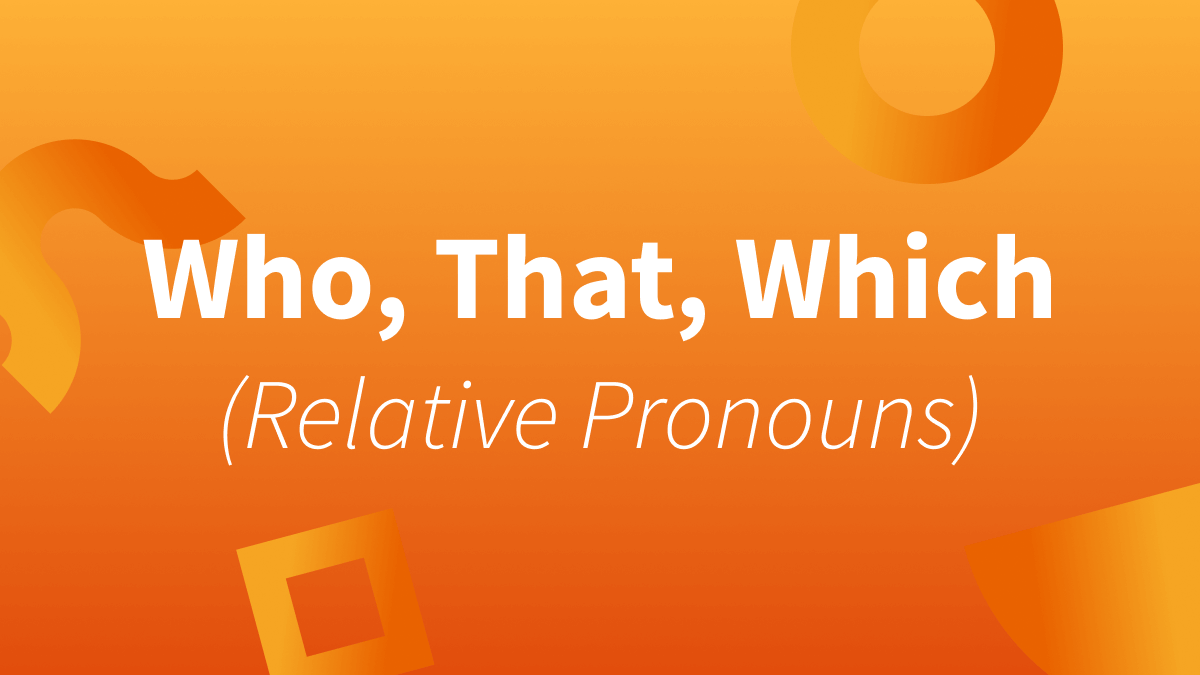- Use who when introducing a clause that describes or modifies people.
- Use that when introducing a clause that describes or modifies objects or non-human things.
- Use which when introducing a clause that describes or modifies objects.
- ○ Clarissa, who has been my friend since first grade, got married last summer.
- ○ The most popular menu item is a chocolate chip cookie that is stuffed with an Oreo.
- ○ My sunglasses, which I bought last week, were stolen.
“Who,” “That,” and “Which”
Steven is a writer ____ seemingly became famous overnight.
Do you know whether to fill in the blank with who, that, or which?
The answer is who.
Steven is a writer who seemingly became famous overnight.
If you didn’t answer correctly, don’t worry. We’re here to put an end to the confusion behind the relative pronouns who, that, and which.
To begin, relative pronouns connect noun phrases to a relative clause that modifies or describes it. Consider the following example:
The cake that Alison baked was delicious.
Here, that connects the noun phrase (the cake) to the relative clause (Alison baked was delicious). Who, whom, whose, which, and that are all relative pronouns.
The type of relative pronoun used depends on the noun phrase (antecedent) and the relative clause that’s modifying it. A non-restrictive clause (non-essential or non-defining) is usually preceded by a comma, whereas no comma is needed before restrictive clauses (essential or defining).
Using “Who” as a Relative Pronoun
Use who as a relative pronoun when connecting it to a relative clause that describes a person or a group of people. Who can be used in both restrictive (defining) and non-restrictive (non-defining) clauses.
My mother, who has diabetes, has to always be careful with what she eats.
In this example, who has diabetes is not essential to the sentence. In other words, the sentence still makes sense even if it’s removed.
The employee who sells the most tickets will win an award.
Here, the clause sells the most tickets is restrictive because it cannot be removed from the sentence without changing the meaning.
Using “That” as a Relative Pronoun
Some writers mistakenly use that in place of who. You may have even come across a text in which that to introduce a clause that describes people, but this is considered colloquial or informal. Keep this in mind: that is used for objects and non-human things.
That is also only used for restrictive clauses and therefore doesn’t require a comma. Consider the following examples:
Those are the products that were recalled.
That’s the Christmas tree that Jonas wanted to buy for his grandfather.
I like cats that are friendly.
Using “Which” as a Relative Pronoun
Because which is also used to introduce a clause that describes objects, it’s often incorrectly used in place of that (or vice-versa). Which is used to introduce a non-restrictive clause and therefore requires a comma before and after.
The monument, which has been part of this town for 50 years, was vandalized.
Jordan wanted to buy the used truck, which was falling apart, for $5,000.
My grandma’s house, which has been part of the family for generations, was getting remodeled.
LanguageTool Is a Text Editor That Can Enhance Your Writing
We only focused on the relative pronouns who, that, and which, and still, we covered a lot of ground. Here are the most important points to remember if you want to make sure to use them correctly:
Relative Pronouns
- Who introduces a clause that describes people. It only needs a comma if it’s introducing a non-essential clause.
- That introduces a clause that describes things or non-human objects, and a comma is never required for that because it’s only used in essential (restrictive) clauses.
- Which also introduces clauses that describe objects, but requires a comma because it introduces non-essential clauses.
- LanguageTool—a multilingual text editor—can detect incorrect relative pronouns and offer corrections.


